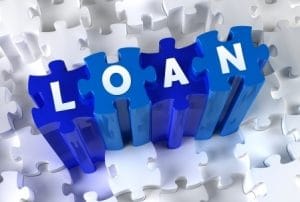What to do in tighter lending conditions
Housing finance is in the news more often than it’s not these days.
One of the reasons is that as capital cities move through their respective cycles so does reporting on the property market.
One day, strong market conditions were a bad thing, and then the next, softer prices are suddenly concerning.
This time around, though, there is the added complexity of the lending environment, which has made it tougher for many would-be homeowners and investors to secure finance.
As I’ve written about before, there are more finance hoops to jump through because of a variety of regulatory restrictions placed on lenders – and especially the Big Four.
So how do you improve your chances of success in today’s tighter lending conditions?
1. Have a budget and stick to it
Budgets are a bit like cleaning the house.
It’s something that you know you should do but you just never find time to do it properly.
Of course, no one wants to live in a house of horrors, so you often get around to flicking the duster around now and then.
Unfortunately, most Aussies similarly ignore their finances, and might know how to spell the word “budget” but have no intention of keeping one.
In today’s lending environment, though, you have to be savvier about what you earn and what you spend, and that means you must create a budget and stick to it.
2. Make sure you pay everything on time
Lenders want to know more about your finances than ever before so it’s imperative that you pay your bills on time.An easy way to make sure this happens is to set up direct debits for all of your regular monthly bills.
It’s never a good idea to give lenders a reason to say no to your loan application – especially when you have a bad credit rating because you simply forgot to pay a couple of bills once or twice.
3. Spend less than you earn
This seems like a no-brainer, but most people spend far more than they earn and don’t even realise they’re doing it.
 The way they overspend is by using their credit cards more than they should and especially when they have no way of paying off the entire balance every month.
The way they overspend is by using their credit cards more than they should and especially when they have no way of paying off the entire balance every month.
So, to have a squeaky-clean loan application, you should allocate a set amount of your income that you spend on discretionary items as well as reduce your use of credit cards to ensure you are truly spending less than you’re earning.
If you continue to use a credit card, make sure that you pay it off every month in entirety.
4. Put some away for a rainy day
Successful property ownership includes cash flow management in lean times, which will mean you’ll only ever need to sell when it’s the best time for you, not because you’ve run out of money.
As part of your budget, you should allocate funds to a rainy-day account, perhaps kept in an offset account or high interest earning savings one.It doesn’t have to be a huge amount every week, because over time it will grow into a figure that should represent several months of income, which will see you through even if you are unwell for an extended period or lose your job unexpectedly.
5. Manage and monitor your personal debt
I’ve already mentioned credit cards, but you should also manage and monitor your personal debt such as car loans.Ideally, you should pay these down before you apply for a home loan as it can drastically impact your borrowing power.
If you’re unable to do that, though, the next best thing is to consolidate all personal debt into one low-interest rate loan, which will likely save you money as well as improve your loan serviceability.
6. Be able to justify your living expenses
One of the biggest changes in the world of lending is the way that living expenses are calculated.Not that long ago, lenders would use a set formula to work out what your monthly expenses probably looked like.
 Now they are drilling down into what your actual expenses are.
Now they are drilling down into what your actual expenses are.
Yes, that means them taking a look at some of your statements and querying that $250 you spend each month at the local BWS when you said it was only $50.
Banks are still lending money today so there is no need to go all monk-like on living expenses.
The key is to understand how much you’re spending, whether you can afford that figure, and be able to justify why you spend what you do.
Pretty simple stuff really.
7. Do a health check on your loans
In tighter lending conditions, it’s a good idea to undertake a health check on your loans to see if you should make any changes.
You should assess whether interest-only or principal and interest loans are the best structures for you.
If not, chat to a broker to explore refinance options with the same, or a different, lender.
Remember, lenders are in the business of lending money and their doors are still open.
You just need to understand the new rules of engagement.
8. Don’t cross collaterise your loans
While it might seem like a good idea to secure finance, cross collaterising your property loans is never a good idea.
 Why is that?
Why is that?
Well, it ties your properties together, which means if you wanted to sell one, for example, the loan is intimately linked to another property.
If that property’s value has decreased, then the proceeds from your sale will be used to pay down that loan before you see any of it.
Cross collaterisation favours lenders because it ultimately gives them control over your portfolio and your wealth creation.
Which makes you realise that it doesn’t make much sense to hand over power to them, does it?
9. Don’t be scared to ask for a better deal on your interest rates or the loan terms
We are constantly amazed at how we can secure better deals for our clients but the average Australian seems incredibly complacent about the home or investment loans. Ask us, we want to help you obtain the best deal possible and the banks are always looking to firstly, retain their existing business and then secondly, secure new business.
We know what we can get you and in many instances this can save you thousands of dollars per annum and ten or even hundreds of thousands of dollars over the life of the loan.
And if your current lender won’t do you a deal then we have plenty of options for you to consider!
There are some indications that we are reaching the end of this tighter lending environment, but we don’t know when things will change.
And that means that we need to understand the rules and operate within them so savvy buyers and investors can make the most of softer market conditions.
The information provided in this article is general in nature and does not constitute personal financial advice. The information has been prepared without taking into account your personal objectives, financial situation or needs. Before acting on any information you should consider the appropriateness of the information with regard to your objectives, financial situation and needs.
- Investment Property Financing: Interest-Only vs Principal and Interest Loans - November 18, 2025
- Serviceability vs. affordability – What’s the difference and how does it affect me? - October 14, 2025
- Why three quality properties beat thirty average ones - September 15, 2025


